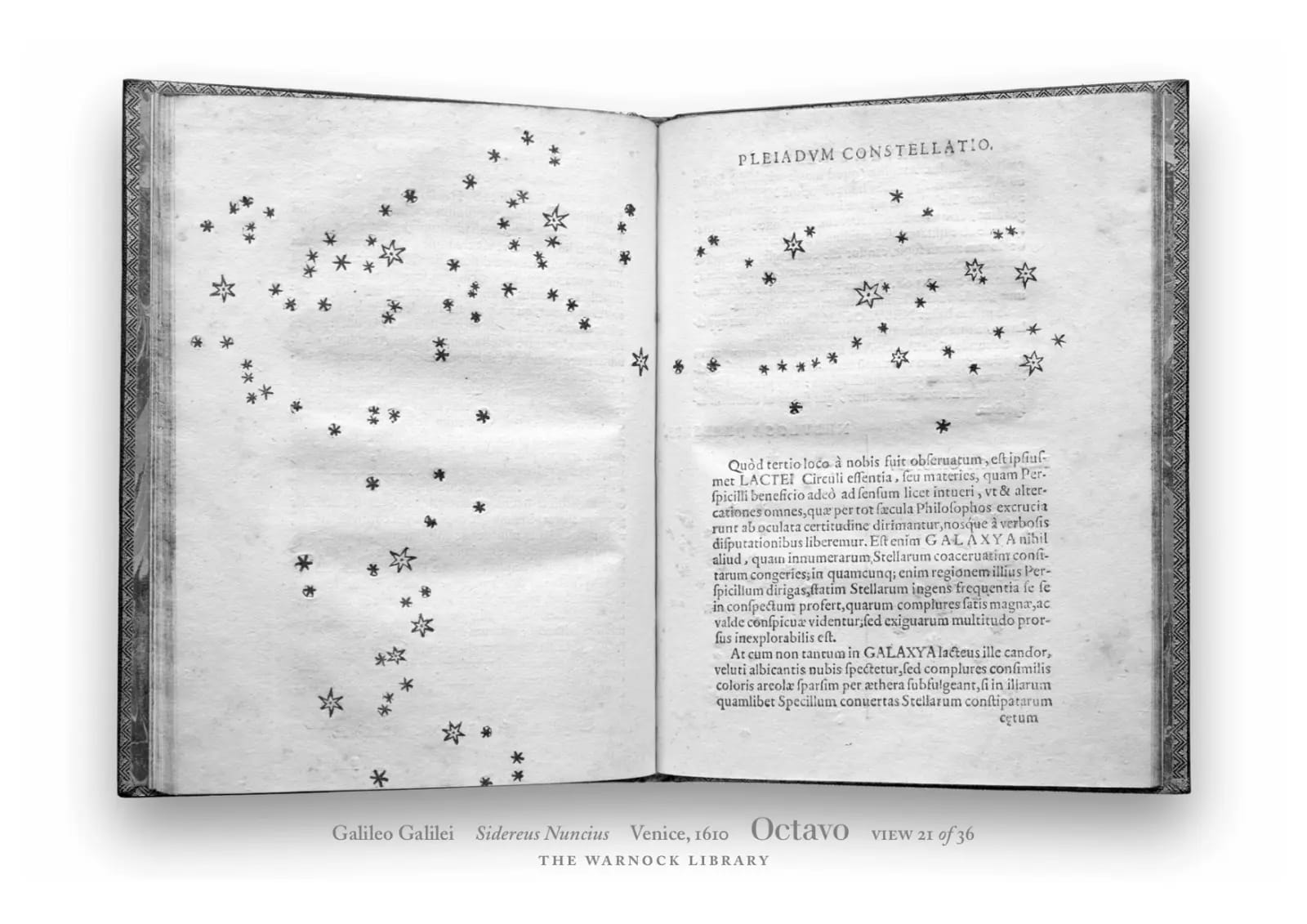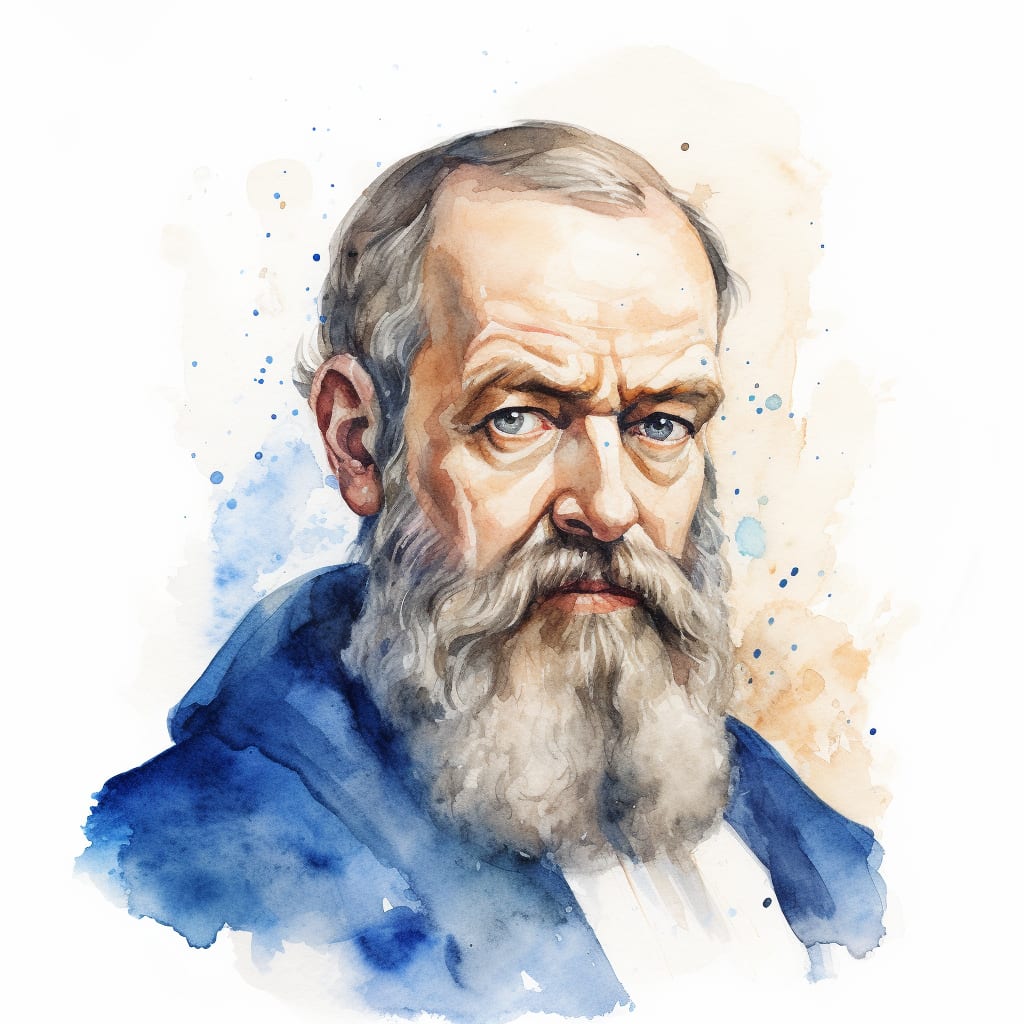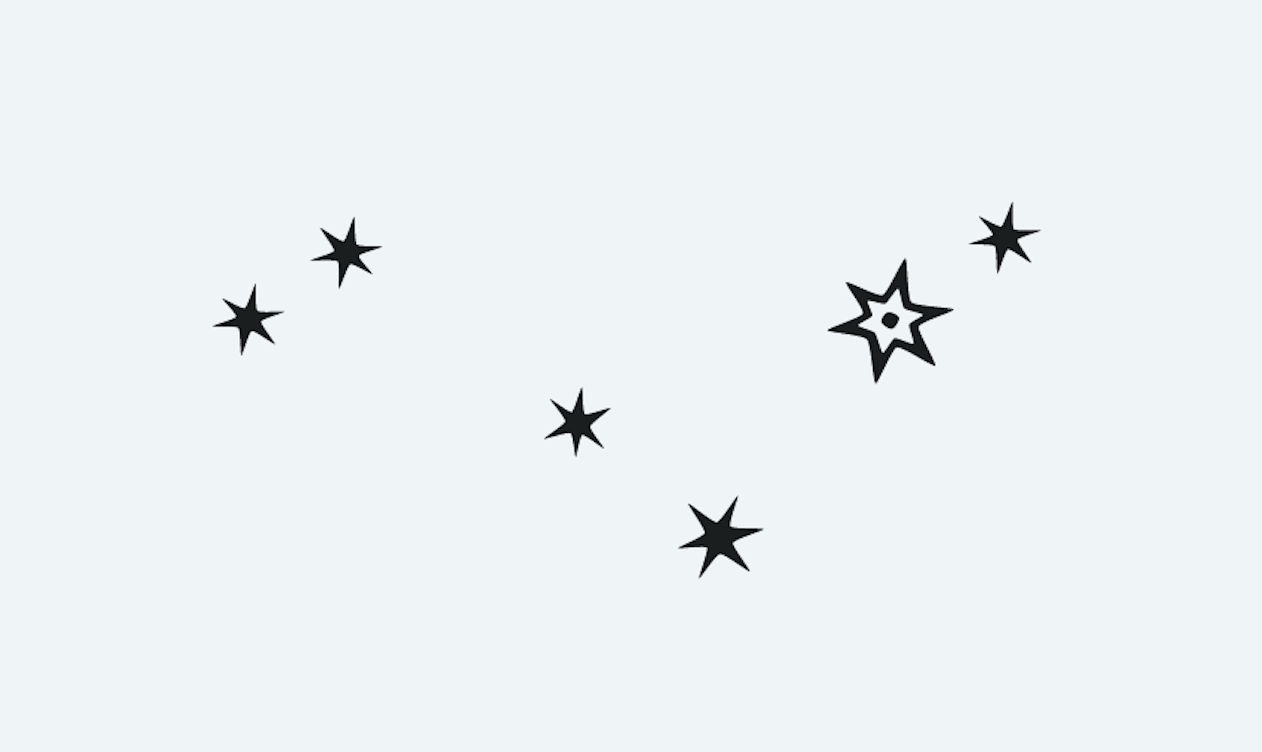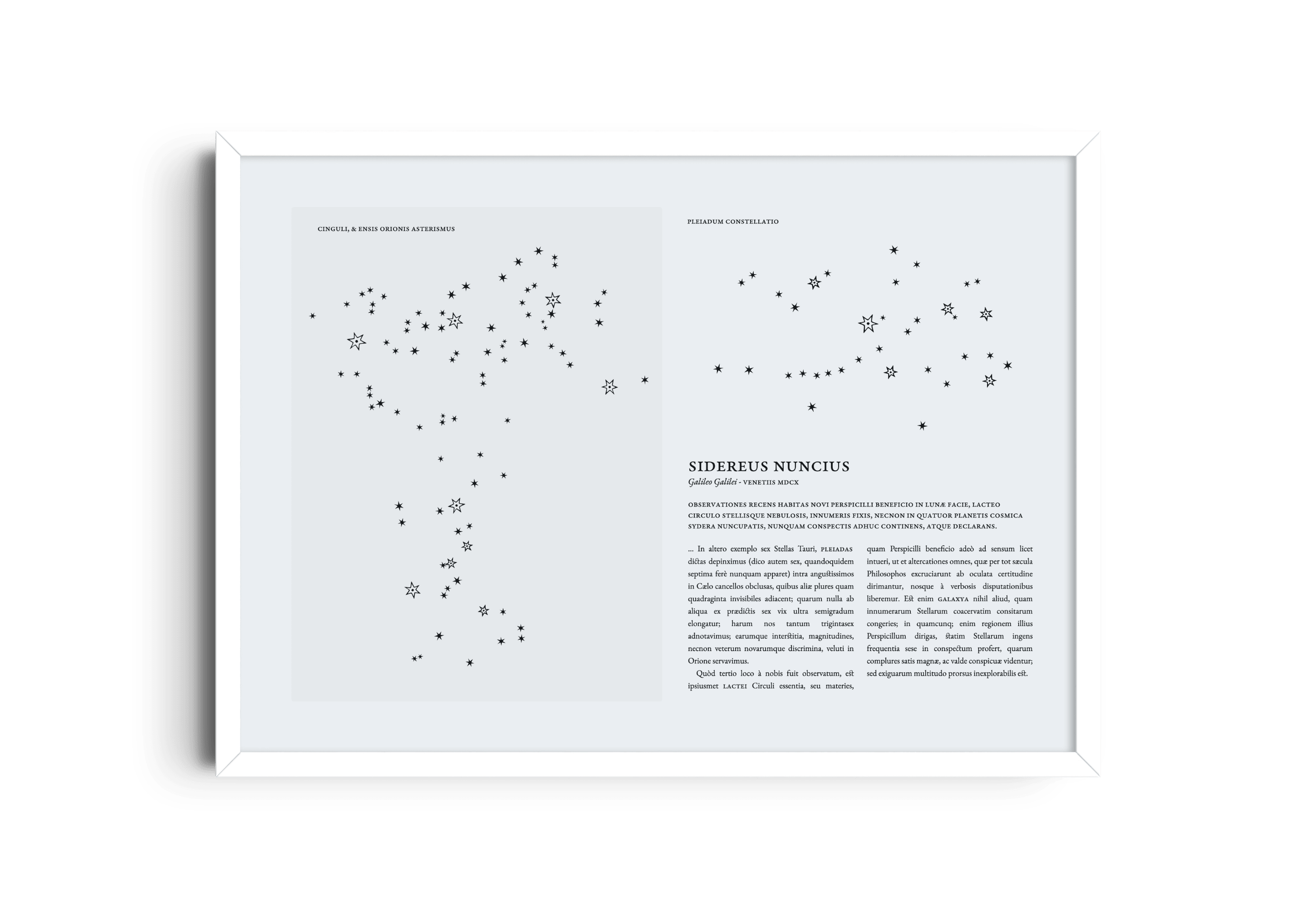Innumeris Fixis
In 1610, just a few days after the initial observations of the Moon's surface, Galileo Galilei authored the Sidereus Nuncius. Within his writings, Galileo conveyed his profound astonishment upon realizing that galaxies are comprised of countless stars. In order to effectively communicate this groundbreaking discovery, he made the decision to meticulously draw a few constellations by hand.

The artwork draws inspiration from the illustrations found in Galileo Galilei's Sidereus Nuncius.
Translation
Subtitle: Containing and explaining observations recently made, with the benefit of a new spyglass, about the face of the Moon, the Milky Way, and Nebulous stars, about innumerable fixed stars and also four planets hitherto never seen, and named Medicean stars.
Body: In the second example we have depicted the six stars of the Bull called the Pleiades (I say six since the seventh almost never appears) contained within very narrow limits in the heavens. Near this lie more than forty other invisible stars, none of which is farther removed from the aforementioned six than scarcely half a degree. We have marked down only thirty-six of these, preserving their mutual distances, sizes, and the distinction between old and new ones, as in the case of Orion. What was observed by us in the third place is the nature or matter of the Milky Way itself, which, with the aid of the spyglass, may be observed so well that all the disputes that for so many generations have vexed philosophers are destroyed by visible certainty, and we are liberated from wordy arguments. For the Galaxy is nothing else than a congeries of innumerable stars distributed in clusters. To whatever region of it you direct your spyglass, an immense number of stars immediately offer themselves to view, of which very many appear rather large and very conspicuous but the multitude of small ones is truly unfathomable.
The translation of Sidereus Nuncius by Albert Van Helden is licensed by the University of Chicago Press, Chicago, Illinois. Copyright ©1989 by The University of Chicago.
About the artwork
The artwork faithfully reproduces a pair of images found in the inaugural edition of the treatise. It accurately depicts the size and placement of the stars, along with the distinct star symbols employed to differentiate between stars previously known and those newly discovered. Furthermore, to achieve the appearance of a hand-drawn sketch, the shape of each star is influenced by random parameters. The accompanying text is directly copied from the original treatise, disregarding any revisions made in subsequent publications.Stars have unique shapes and orientations, with rays not perfectly positioned and of different lengths.

Excerpt of the Sidereus Nuncius reproduced in the artwork, taken from the original treatise published in New Latin by Galileo Galilei on March 13, 1610. In the artwork, the Orion constellation has a darker background, this helps in recognizing the presence of two different constellations.
Galileo Galilei
1564-1642
Galileo Galilei was an Italian astronomer, physicist, and mathematician, often referred to as the "father of observational astronomy" and the "father of modern physics." He made significant contributions to various scientific fields and is best known for his improvements to the telescope, which revolutionized astronomy.
In 1610, Galileo published his groundbreaking work "Sidereus Nuncius". In this book, he presented his astronomical discoveries made using the telescope, which he had constructed. He observed the Moon's surface, revealing mountains and craters, and discovered four moons orbiting Jupiter, now known as the Galilean moons. He also observed phases of Venus, supporting the heliocentric model proposed by Copernicus.


